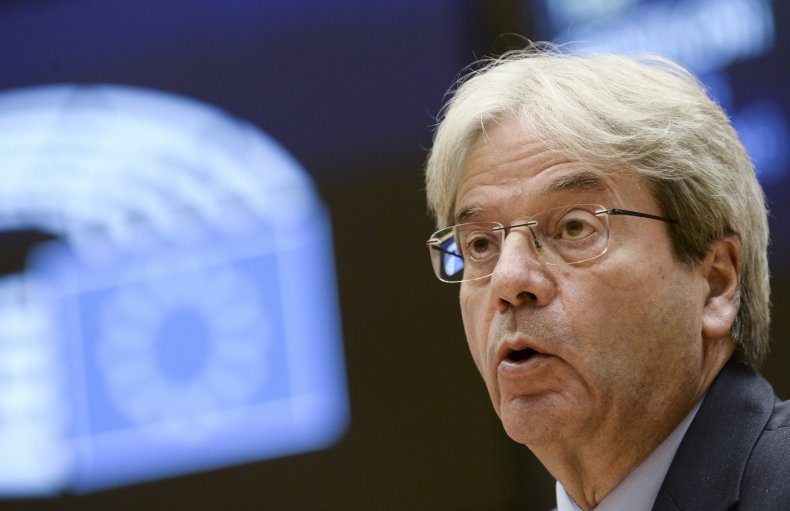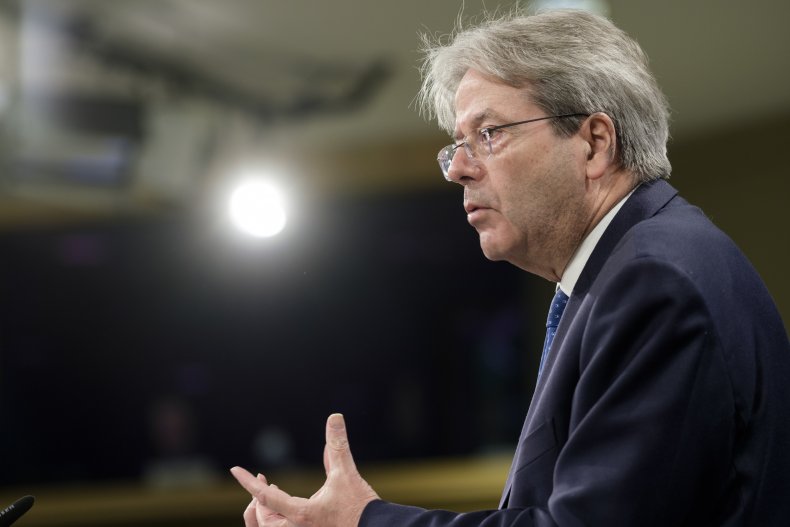EU Leaders Shrug Off Criticism D.C. is Doing More for Pandemic Relief
Amid criticism that the U.S. reaction to COVID-19 under the Biden administration has outdone the European Union's (EU) response, officials said their relief plan is comparable to what Washington is rolling out.
Speaking before a European Parliament committee, EU Economy Commissioner Paolo Gentiloni said that when all efforts are counted together, the EU's COVID response stacks up to the $1.9 trillion relief package passed under President Joe Biden.
"Measures taken until now from member states and the EU reach so far 4.8 trillion" euros, the Italian commissioner told legislators.
The EU authorized a 750 billion euro ($910 billion) common recovery fund package and a 1.1 trillion euro ($1.3 trillion) seven-year budget focused on restoring the economy of its 27 member states.
For more reporting from the Associated Press, see below.

During his first 100 days in office, Biden has secured passage of a sweeping $1.9 trillion pandemic package to bring relief to 330 million Americans.
"If we look at it in a certain way, we could say that the U.S. reaction was stronger, faster than the European one," Gentiloni said.
Take note, however, "that we are not a federal state. And so we have to consider both member states and the EU level," bringing the total to $4.8 trillion.
"So we are not used to mixing all the different interventions. But if we do this, we reach an amount which is not so different from the effort of the United States," Gentiloni said.
Many major social affairs and economic policies are still run at a national level in the European Union, and stimulus measures for companies and the workforce also have a massive national input which is rarely visible in EU statistics.
Still the 750-billion euro "Next Generation EU" package stands out because it allows the bloc for the first time to raise money on the markets by itself. Much of the aid will be spent among the poorer and harder-hit member states.
EU Vice President Valdis Dombrovskis said that if requests from member states proceeded as planned, the first disbursements to the member states on prefinancing could already be made in July. He added that the second tranches of financing could already be made before the end of the year.
The EU has a strict set of benchmarks that member states must reach if the money is to be paid out. In all, 37% must be spent on green projects, ranging from offshore wind parks to cycling tracks. And 20% must go to digital projects, including 5G networks and digitizing public administration.
Funds will only be released piecemeal once member states have proven previous aid has been spent according to plan.
Newsweek, in partnership with NewsGuard, is dedicated to providing accurate and verifiable vaccine and health information. With NewsGuard's HealthGuard browser extension, users can verify if a website is a trustworthy source of health information. Visit the Newsweek VaxFacts website to learn more and to download the HealthGuard browser extension.


